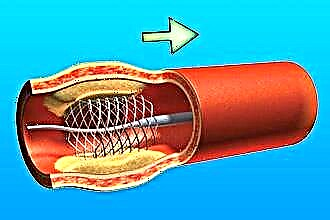Many people face a problem when mucus from the nose flows down the throat, remains on the back of the larynx and causes very unpleasant sensations. After treatment, there is a short-term relief, and then the accumulation of snot in the throat reappears. The problem can be solved once and for all only by completely eliminating the cause of this phenomenon. Symptomatic treatment is ineffective in this case. Therefore, a consultation with a doctor and a thorough diagnosis in this case are simply necessary.
Causes of mucus accumulation
 There are many reasons why snot accumulates in the throat. This can occur under the influence of irritating environmental factors, and also be a symptom of various diseases of internal organs. That is why, in addition to external examination, several more laboratory tests will be needed: blood test, sputum analysis, etc. Most often, persistent snot in the nasopharynx is collected due to inflammatory processes in the upper respiratory tract, which can be caused by:
There are many reasons why snot accumulates in the throat. This can occur under the influence of irritating environmental factors, and also be a symptom of various diseases of internal organs. That is why, in addition to external examination, several more laboratory tests will be needed: blood test, sputum analysis, etc. Most often, persistent snot in the nasopharynx is collected due to inflammatory processes in the upper respiratory tract, which can be caused by:
- allergic reactions;
- pathology of the development of the nasopharynx;
- fungal diseases;
- viral infections;
- mechanical irritation.
If the appropriate treatment is not started on time, then the snot flows down the back wall into the throat, and the infection thus spreads further. The consequence is bronchitis, which gradually develops into pneumonia. This is why it is so important not to ignore this seemingly harmless symptom.
 In some cases, the opposite is true. Snot collects in the throat due to the fact that the infection that got there has already caused the development of ENT disease. They can signal that the patient has pharyngitis, sinusitis, adenoiditis or sinusitis. In this case, most likely, you will not be able to do without antibiotics.
In some cases, the opposite is true. Snot collects in the throat due to the fact that the infection that got there has already caused the development of ENT disease. They can signal that the patient has pharyngitis, sinusitis, adenoiditis or sinusitis. In this case, most likely, you will not be able to do without antibiotics.
Another reason why snot runs down the back of the throat is because it is constantly irritated. Negative factors can be: active or passive smoking, too dry indoor air, very spicy or hot food, alcoholic or carbonated drinks. Sometimes snot between the throat and nose collects when the head is in the wrong position during sleep, when the pillow is too low and the head is thrown up.
The main symptoms
The effectiveness of treatment directly depends on how accurately the reason for the formation of thick snot in the nasopharynx in an adult is determined. It is not easy to find out exactly and only a doctor can do it. Self-medication can not only aggravate the situation, but also complicate the diagnosis.
 If you drink incorrectly selected antibiotics, then a smear on the microflora will no longer show the true pathogens of the disease, and part of the pathogenic microflora will remain in the nasopharynx and later cause a relapse.
If you drink incorrectly selected antibiotics, then a smear on the microflora will no longer show the true pathogens of the disease, and part of the pathogenic microflora will remain in the nasopharynx and later cause a relapse.
The fact that mucus accumulates between the nose and throat is clearly signaled by the following symptoms:
- constant sore throat, desire to cough;
- unpleasant sensation of snot in the throat;
- the presence of lumps of mucus in coughing up sputum;
- difficulty swallowing, slight pain is possible;
- burning sensation, irritation on the back of the throat.
If these symptoms persist for several days, even in the absence of an elevated body temperature, you should definitely see a doctor.
It is quite easy to deal with the problem at the initial stage. But if the infection gets deep into the throat, strong antibacterial drugs will be needed.
Treatment methods
Only a comprehensive complex treatment is capable of quickly eliminating snot in the throat. The first thing to do is eliminate the irritation. Anti-inflammatory drugs work well with this. But, depending on the causes and individual characteristics of the course of the identified disease, other drugs are also connected to the treatment:
 antibacterial - if a smear on the microflora revealed an infection;
antibacterial - if a smear on the microflora revealed an infection;- antifungal - if fungi have been sown in the analyzes;
- antipyretic - when the body temperature rises above 38.5 C;
- antiseptic - if there is blood in the sputum (when small capillaries burst due to constant irritation);
- antihistamines - if snot in the throat appears due to allergies;
- moisturizers - oil-based preparations that prevent overdrying of the nasopharyngeal mucosa;
- immunomodulators - means that increase immunity and strengthen the body.
The use of vasoconstrictor drugs, with which most are trying to cure snot in the throat on their own, in this case is absolutely ineffective. Moreover, they dry out the back wall of the nasopharynx and cause even more mucus production. In addition, these drops have a number of contraindications. Therefore, their use without a doctor's prescription is highly undesirable.
From physiotherapy procedures, in order to remove viscous snot in the nasopharynx, inhalations are often prescribed, which contribute to better sputum discharge, and quartzization, which has a strong bactericidal effect. Washing the throat with a solution of furacilin, iodine-salt or decoctions of herbs: chamomile, sage, eucalyptus, coltsfoot has a good effect.
 It is useful to irrigate the back wall of the nasopharynx with drugs that are sprayed under pressure - sprays. Ingalipt, Ingakamph, Hapilor and others help a lot. In some cases, it is advisable to use Lugol's solution, which lubricates the back of the throat.
It is useful to irrigate the back wall of the nasopharynx with drugs that are sprayed under pressure - sprays. Ingalipt, Ingakamph, Hapilor and others help a lot. In some cases, it is advisable to use Lugol's solution, which lubricates the back of the throat.
It is very important to complete the started treatment. Even if only a small focus of infection remains, permanent snot in the nasopharynx will return again. Usually, at the end of the course of treatment, the doctor prescribes a second smear on the microflora to make sure that there is no infection at all. Remember that ignoring this symptom or inadequate treatment can lead to serious chronic illness.

 antibacterial - if a smear on the microflora revealed an infection;
antibacterial - if a smear on the microflora revealed an infection;

